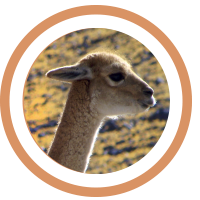GECS NEWS Magazine
GECS News is an annual publication of the South American Camelid Specialist Group (GECS), which is part of the Species Survival Commission of the IUCN (International Union for Conservation of Nature). The magazine is intended for the dissemination of knowledge and news that contribute to the conservation and sustainable use of wild vicuñas and guanacos. [+]

ABOUT US
What is the GECS
The GECS (South American Camelid Specialist Group) is one of more than 100 volunteer expert groups in the Species Survival Commission (SSC) of IUCN, the International Union for Conservation of Nature. Our group works along with more than 7,000 volunteers of the SSC, all working together towards achieving the vision of “A world that values and conserves present levels of biodiversity”. (+)


SPECIES
GUANACO

SPECIES
VICUÑA
Se han descrito dos subespecies geográficas: la del Sur Vicugna vicugna vicugna Molina, 1782 y la del Norte

NEWS

New book with participation of GECS member

The International Vicuña Convention is Back!

The GECS present at the IPBES Plenary Meeting in Germany














